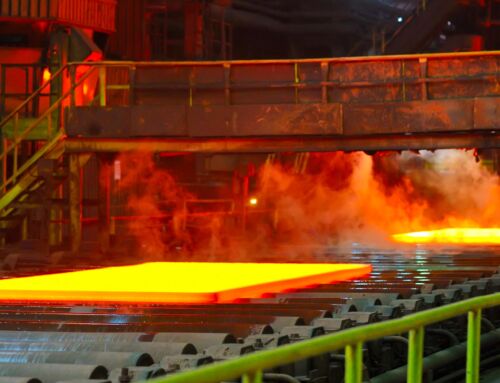Within the metal processing industry, the blasting of thick sheet metal also has its importance. This often underestimated but important process , plays an essential role in facilitating the cutting and subsequent processing of metal products. In this article, we will delve into every aspect of sandblasting: from its definition and its benefits to practical details regarding its execution on thick sheet metal. Through this detailed exploration, we will gain a comprehensive understanding of how blasting fits into the broader context of the metalworking industry, thus providing a solid foundation for fully understanding the importance and impact of this process.
What is sandblasting of thick sheet metal?
Sandblasting is usually a primary process in metalworking, especially when dealing with thick sheet metal. But what exactly does it imply?
Sandblasting is a metal surface cleaning method that employs abrasive material , such as sand or metal grit, projected at high speed against the surface of sheet metal. This targeted process aims to effectively remove rust, rolling calamine and other impurities that can hinder material processing.
The result? A clean metal, free of slag, calamine or rust and with a surface having a calibrated roughness ideal for subsequent machining. Sandblasting thick sheet metal not only improves the aesthetic appearance of the material, but also increases its ease of processing , in order to have higher quality in the finished products.
The advantages of sandblasting:
- Elimination of rust and lamination calamine: sandblasting provides surface cleaning of sheets, effectively eliminating rust and lamination calamine.
- Removal of sharp edges and burrs: Through sandblasting, sharp edges and burrs are removed on the sheets, making the surface safe for handling and further processing. This not only improves workplace safety, but also facilitates subsequent processing operations, reducing the risk of accidents and damage.
- Creation of a rough surface for protective coatings: sandblasting creates a rough surface ideal for adhesion of protective coatings, such as primer and possibly even paint. This promotes better adhesion of the coatings, providing effective protection against corrosion and weathering, and further extending the life of the sheets.
- Improved appearance of sheet metal: sandblasting not only ensures the cleanliness of sheet metal, but also improves its aesthetic appearance. After the process, the sheets appear clean and uniform, showing any rolling imperfections in time before further operations,
Performing sandblasting on thick sheet metal:
The process of blasting thick sheet metal begins with surface preparation, which may include removing coarse contamination and cleaning the sheet metal. Next, the sheet is placed inside a blasting chamber, where it is subjected to the action of abrasive particles. These particles are projected onto the sheet surface by an air gun or high-pressure jet, effectively removing impurities and leaving the sheet clean and ready for further processing.
Conclusions
Ultimately, the blasting of thick sheet metal plays an important role in ensuring the quality and longevity of metal fabrications. Because of its many advantages and its effectiveness in preparing sheets for subsequent processing steps, sandblasting emerges as an advantageous step within the metalworking process.
The removal of rust, lamination scale and other impurities through sandblasting allows the user to work on a clean surface free of defects or to show them if there are any, being able to take appropriate action before it is too late. In conclusion, investing in the sandblasting of thick sheet metal proves to be a key investment for companies in the engineering sector, as it ensures the production of high-quality, strong and durable products that meet the needs and expectations of the most demanding customers.







